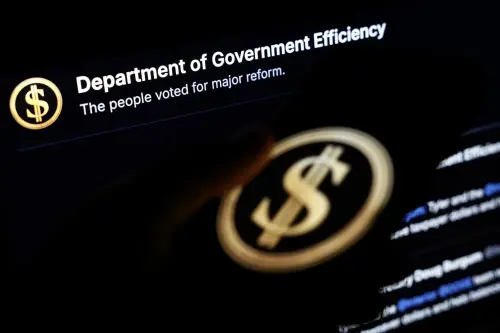There has been much written already about the ingenuity of Sen. Mitch McConnell’s (R-Kentucky) procedural fix for raising the debt ceiling before August 2nd. To be sure, the most important element of McConnell’s proposal is its impact on resolving the debt limit conundrum. But I think the procedural mechanics of the proposal merit quick comment.
McConnell’s plan delegates to the president the power to request an increase in the debt ceiling (in three increments before the 2012 elections). The debt limit would be raised, so long as Congress did not pass a disapproval resolution that rejected the president’s request (or, so long as Congress did not override a presidential veto of a joint resolution to disapprove the increase). In other words, the president would bear the burden of raising the limit and his partisans in Congress would bear the burden of sustaining a presidential veto that enabled the lifting of the debt ceiling. (Of course, Democrats could also vote to disapprove the increase before then voting to sustain a presidential veto of that disapproval resolution. But “I was against it before I was for it” doesn’t always fly with the voters.)
The most interesting element of the proposal is not that it provides for expedited consideration in the Senate of the disapproval resolution. Privileging disapproval resolutions—in this case, granting the House and Senate 15 days to disapprove the request, preventing senators from filibustering the motion to proceed to the resolution, limiting debate to ten hours, and requiring only a simple majority for passage—is nothing new. Steve Smith and I explored the origins and politics of so-called “statutory limits on debate” some time ago. But in this case, Senator McConnell—the minority leader—is the one heralding a procedural solution that prevents senators from unlimited debate on a central issue of the day. As McConnell noted at the beginning of the 112th Congress in response to some Democrats’ efforts to rein in the filibuster, “The Founders crafted the Senate to be different. They crafted it to be a deliberate, thoughtful place. And changing the rules in the way that’s been proposed would unalterably change the Senate itself. It will no longer be the place where the whole country is heard and has the ability to have its say, a place that encourages consensus and broad agreement…”
The minority leader is not the first senator to fight to protect the Senate’s rules and then turn to support restrictions on senators’ debate rights when it serves his or her policy and political interests. On dozens of occasions over the past seventy years or so, the Senate has accepted limits on debate to ensure that a resolution approving or disapproving an action proposed by the president would receive a vote. Most of these episodes are just like the situation envisioned under the McConnell proposal: They involve a congressional effort (however political or partisan it may seem …) to check the exercise of authority that has been delegated to the executive branch. Perhaps not surprisingly, when the Senate has adopted these expedited procedures in the past, the floor debate has predominately focused on the delegation of power to the executive branch—with little attention paid to the imposition of limits on senators’ otherwise-heralded right of debate.
Without opining on whether or not Congress and the president should adopt McConnell’s solution, I would just conclude by noting that fast-track procedures (with or without approval or disapproval resolutions) have in the past been central to resolving vexing public problems, including closing obsolete military bases, implementing trade agreements, and passing federal budgets. Extended debate in the Senate is not quite as inviolate as senators often claim.
The Brookings Institution is committed to quality, independence, and impact.
We are supported by a diverse array of funders. In line with our values and policies, each Brookings publication represents the sole views of its author(s).



Commentary
Op-edThe Procedural Side of Senator Mitch McConnell’s Debt Ceiling Fix
July 13, 2011